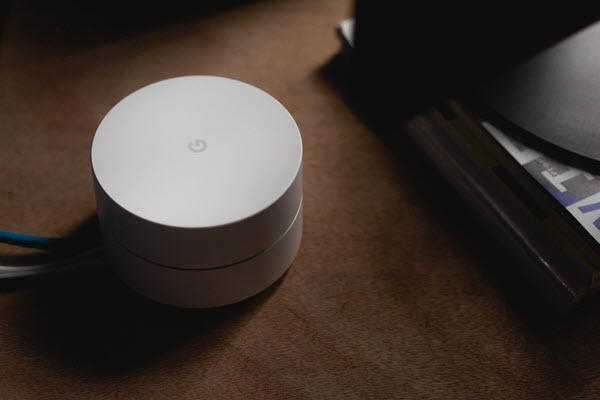How WiFi6 Will Make Your Home (And Business) Better
By Brian Wallace
July 9, 2019 • Fact checked by Dumb Little Man

Do you remember the first time you got a WiFi connection in your home?
The possibilities seemed endless, and suddenly they were. A whole new set of gadgets started to emerge, from connected doorbells to connected thermostats. There was an increase in connected gadgets per person, too.
Where the internet was once only available from a shared home computer, people now have multiple devices each, including phones, laptops, e-readers, gaming systems, and more.
Unfortunately, the older generation of WiFi has struggled to keep up. While speeds have increased, it still has a fatal flaw. Many current WiFi routers only connect to a single device at a time, sending and receiving information from just that device before moving on to the next.
More recent WiFi5 routers can connect to 4 devices at a time. WiFi6, meanwhile, will be able to connect to multiple devices at a time, revolutionizing our connected homes and businesses.
Old Technology Leads To Lag Time

Your old WiFi router is getting the job done but sometimes, it struggles to keep up. You can watch streaming video just fine, but when the kids are all playing Fortnite with their friends, your video might buffer more.
That’s because the more devices there are connected to a single WiFi router, the longer it takes for the signal to jump back to your device. Every time you add a new device to your old network, it bogs the signal down even more.
The History of Signal Hopping And WiFi
In 1941, Hollywood actress Hedy Lamarr patented Frequency-Hopping Spread-Spectrum as a way to guide torpedoes in WWII without being detected. The technology skipped signals across different frequencies in a predetermined pattern, much like how WiFi works today.
In fact, this invention is also used in Bluetooth and Zigbee, as well as many more technologies. Its importance wasn’t discovered for decades after its invention. Then, Lamarr finally received recognition for her work in 1997. That’s three years before she died.
ARPANET was the first network of multiple computers, hardwired together to communicate with each other. It’s thought of as the predecessor to the internet. The first wireless network was developed in 1971 at the University of Hawaii using radio communications.
Then, TCP/IP was invented in 1983 to grow a single network to a network of networks. The World Wide Web followed in 1990. Multiple technological advances before, during, and after these major milestones had been stitched together to give us today’s modern WiFi.
Upgrading to Wifi 6: The Future of WiFi

WiFi5 routers upped connections from one device at a time to four. As of 2017, the average U.S. household had five connected devices, enough to slow the connection for everything. What’s more, the average number of connected devices has ballooned to more than three times that of 2017, ushering in the need for even better technology.
Think about your connected thermostat and all the auxiliary items you can connect to it, each with its own need for a WiFi connection. Then, think about your IoT refrigerator that connects to your Alexa so you can check the contents of your fridge before heading home from the office. There are all the WiFi connected televisions, gaming systems, tablets, laptops, and more, each bogging down your system.
WiFi6 is going to revolutionize the way we connect to the internet both at home and at work. Not only will the new generation of WiFi be able to connect to more devices at a time, it will also be able to handle larger packets of information from each. Think about all the laptops on your work network and how laggy the internet gets when everyone is in the office on the same day — upgrading to WiFi6 will make that better.
See Also: Top Remote Working Trends in 2019 You Should Know More About
The Need Is Growing Greater
By next year, there will be more than 20 billion IoT devices worldwide. That’s more than 2.6 times what we already have today.
Before you buy your next IoT toaster, stop to ask yourself if your network is ready to handle yet another connected device. It might be time to upgrade to WiFi6 just to save your sanity. Learn more about the history and future of WiFi from the infographic below!
Brian Wallace
Brian Wallace is the Founder and President of NowSourcing, an industry leading infographic design agency based in Louisville, KY and Cincinnati, OH which works with companies that range from startups to Fortune 500s. Brian also runs #LinkedInLocal events nationwide, and hosts the Next Action Podcast. Brian has been named a Google Small Business Advisor for 2016-present and joined the SXSW Advisory Board in 2019.








